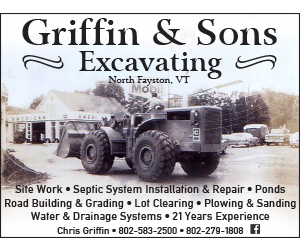To The Editor:
I have a history degree. It hasn’t done me a lot of good in my career, but it has given me a lifelong distrust in revisionism. Which leads me, against my better judgement, to rebut former select board member Spinosa’s letter to the editor of June 4, 2020. I won’t get into the weeds, but I’ll let the MRVTV public record and the observations of folks in the room that night be my witness relative to the statement that was quoted in The Valley Reporter and Sal’s letter to the editor on June 4, 2020.
Most important is the point I made in the quote Spinosa referenced about the historic trend of the Waitsfield Select Board taking a tactical perspective to the leadership of the town. Don’t get me wrong, the day-to-day business of the town is a priority. Roads, budgets and quality of daily life issues are important and easy to get absorbed in. The concern that I have going into my second term is the trend of town government to work in silos. The particular situation that Spinosa addressed in his letter is a prime example. There have been numerous studies and projects making it clear that there is a housing affordability crisis in Vermont. Communities that are, like us, lucky enough to include a robust recreational resource and, thus, a second home component feel this housing crunch more severely.
I believe economic diversity is key to a prosperous future in the MRV. That boils down to affordable housing folks – homes for young families and places to live that folks can afford in their later life. The recently released Kennedy housing study – commissioned by the three towns and the MRV Planning District – identifies the demographics of The Valley getting older and richer. We are trending the wrong way and the market shows no signs of helping to correct this slide toward a less sustainable and vibrant community.
I think the key to creating economic diversity is strategic thinking on the part of leadership. The key to good strategy is getting out of silos and creating an environment where the select boards, planning commissions, zoning administrators and DRBs in all the towns communicate and work together toward common goals. The Mad River Valley Planning District is a perfect venue for this happen. The Mad River Valley Housing Coalition, the Transportation Action Committee and the recreation signage work are good examples of this process working. Now we need the select boards to plug in and take advantage of this good volunteer work. To be clear, I don’t see the towns building or managing affordable housing projects. I see them forging consensus on what affordable housing looks like in the MRV and then making sure the barriers are minimized. Ultimately I would hope that when a proposal was brought to the Waitsfield Select Board it would be something nobody would be surprised or threatened by. It would have been crafted overtime collaboratively with the ultimate goal – a better future – in mind.
Jon Jamieson
Waitsfield, Vermont






